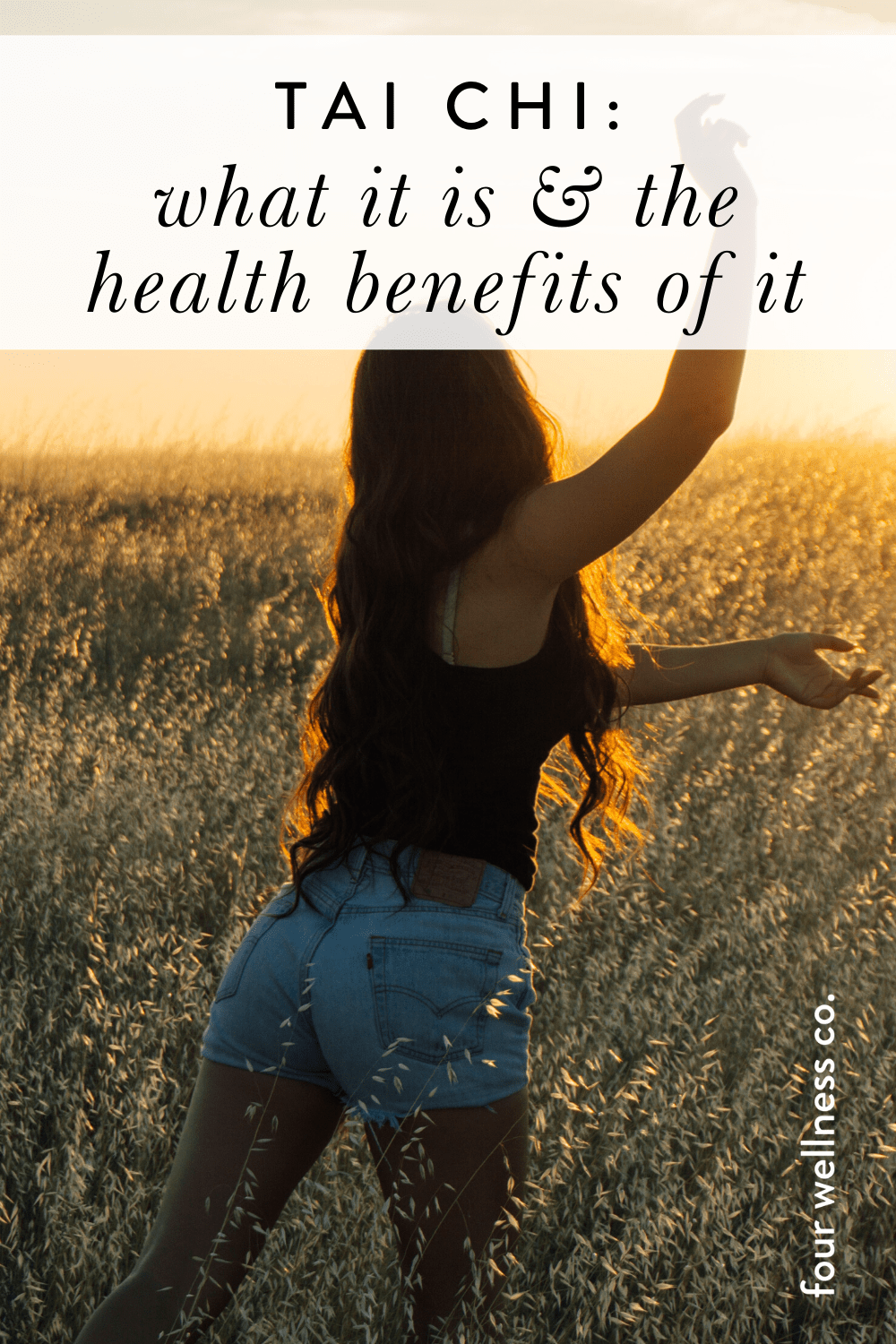Tai Chi: What It Is & the Health Benefits of Doing It
Society is increasingly fast-paced, leaving many of us stressed, overwhelmed and even anxious. But tai chi, a traditional Chinese martial art, can help bring some calm and order to our modern chaos.
This mind-body practice (a form of “meditation in motion”) is encouraged for a range of health benefits, both mental & physical.
What is tai chi?
Tai chi is an ancient Chinese fighting art based on principles of Taoism and Confucianism. According to Taoist philosophy, opposing yet complementary elements yin and yang (☯︎) make up the universe, and these forces must be kept in a state of harmony to stay healthy. Tai chi promotes this balance through mind-body integration.
Today, tai chi is practiced worldwide for a few different purposes: defensive training, physical exercise and meditation.
Tai chi as defensive training
External martial arts (such as karate or kung fu) generate power from physical strength and agility (think punches, jumps and kicks—hiyah!). In contrast, internal martial arts (like tai chi) generate power from the mind (spiritual energy qi), not muscle.
Tai chi as a martial art incorporates soft, circular, and tranquil movements (and no, this doesn’t mean it’s easy!). Tai chi as self-defense is challenging and typically requires extensive proper training.
However, tai chi as a mind-body exercise is relatively simple and quick to learn. It can be easily adapted for all ages and fitness levels, from elite athletes to patients recovering from an injury or wheelchair bound.
So, how has tai chi evolved from a fighting art to a universal health practice?
Tai chi as physical exercise & meditation
Tai chi as low-impact physical activity consists of a series of slow, gentle and flowing movements and stretches. Each posture is connected and flows seamlessly to the next, keeping the body in constant, smooth motion. Weight is grounded and shifts from leg to leg, maintaining balance and stability.
But to reap full health benefits, deep breathing and mindfulness is often incorporated with each physical movement. Breathwork is intentional and the mind remains calm and alert, focused on each bodily sensation.
Styles of tai chi
There are five styles of tai chi, each with unique lineage, characteristics and movement style:
Chen: Oldest form of tai chi; alternates quick, explosive movements with slow, graceful movements
Yang: Most popular and widely practiced; easily adaptable big, exaggerated movements
Wu: Second most popular style; emphasis on small, compact movements adding extension leaning forward and backward
Sun: Combination of styles; incorporates unique footwork with gentle, flowing movements
Hao: Least popular and widely practiced; advanced; focus on qi (internal energy) with very small physical movements
It’s important to choose the right tai chi style for you.
Not sure where to start?
Yang and Wu are often easier for beginners to pick up
Yang is recommended for those recovering from injury (due to minimal stress on muscles and joints)
Chen helps improve leg strength and stretch out tight muscles
When practiced regularly (and correctly!), all of these tai chi styles have numerous health benefits.
Health benefits of tai chi
There is growing evidence that tai chi can be used in both treating and preventing many health conditions. So much so, Harvard Medical School suggested the exercise be referred to as “medication in motion.” But “medication” for what?
Studies show tai chi has numerous health benefits, including:
Improves balance, flexibility & muscle strength
One of the first benefits regular tai chi practitioners often notice is improved balance, flexibility and muscle strength (of both the upper and lower body). Some studies even report a reduced risk of falls (an important aspect of senior wellness!). Tai chi is commonly recommended as a physical therapy technique for these reasons.
Reduces chronic pain
Numerous studies demonstrate a reduction in stiffness and pain symptoms for conditions such as fibromyalgia and osteoarthritis. The mindfulness and meditation component is also critical in improving chronic pain.
Reduces anxiety & depression
Tai chi is associated with mindfulness and tranquility. Many practitioners report lower stress levels and improved emotional health.
Improves sleep quality
Studies show that tai chi improves sleep quality and can be an alternative behavioral therapy in treating insomnia.
Improves cardiovascular function
Tai chi provides some aerobic benefits and has been shown to reduce blood pressure and resting heart rate. Many tout benefits for cardiovascular disease (both in prevention and condition management).
Improves respiratory function
Studies have shown tai chi boosts exercise and oxygen capacity, improving respiratory function.
Boosts cognitive function
Physical exercise and meditation improve cognitive and memory function in general—and tai chi certainly promotes this as well.
Longevity
Yep, you read that right. Regular moderate-intensity exercise (such as tai chi) has been shown to promote longevity—even more so than regular strenuous exercise!
How to practice tai chi
So where should you begin?
Seek medical advice, if needed.
First and foremost—if you have any pre-existing health conditions or concerns, talk with your doctor before beginning any new exercise routine, including tai chi. While safe (and even recommended) for most, confirm with your doctor that this is an appropriate exercise for you. Some postures may need to be modified or avoided.
Then, here are a few simple steps to starting your own beneficial tai chi practice:
Choose your tai chi style
Next, review the five tai chi styles listed above. Consider your goals and physical limitations when choosing the style most suited for your needs. Consult an instructor with questions.
Where to practice tai chi
Tai chi is easily accessible and low input. It does not require expensive gear, can be practiced anywhere (indoors or outdoors) and with anyone (alone or in a class).
Consider observing or attending a class to learn tai chi basics (individual feedback from an instructor is always a bonus!). Local community centers, gyms and health systems may offer discounted classes for members. There are many online tai chi classes as well.
If you’d prefer to teach yourself, there are a variety of YouTube video and text tutorials available. Find a space with flat ground and plenty of room to move around freely. Consider playing relaxing music to set the mood for your session.
What to wear for tai chi
Wear comfortable and loose fitting clothing to maximize your range of motion. Some prefer to practice in bare feet while others opt for a light, flexible and comfortable athletic shoe.
How often to practice tai chi
To achieve optimal benefits, practice tai chi for at least 15 minutes daily. Practicing regularly (for a shorter amount of time) is better than practicing less regularly for extended periods of time. Once you learn tai chi exercises, incorporate postures into your everyday life.
Because the tai is definitely worth the chi. 🤺
Create your own fun & functional fitness plan
Grab our printable/fillable Fitness Guide—it’s part of our Wellness Library of healthy living guides + resources.
✔️ how to set specific + attainable fitness goals
✔️ tips for creating a workout plan you actually enjoy
✔️ how to schedule your workouts to set yourself up for success
✔️ a printable/fillable fitness plan + schedule
FOUR WELLNESS TIP
Regular tai chi practice (at least 15 minutes per day) can improve both physical & mental health.












